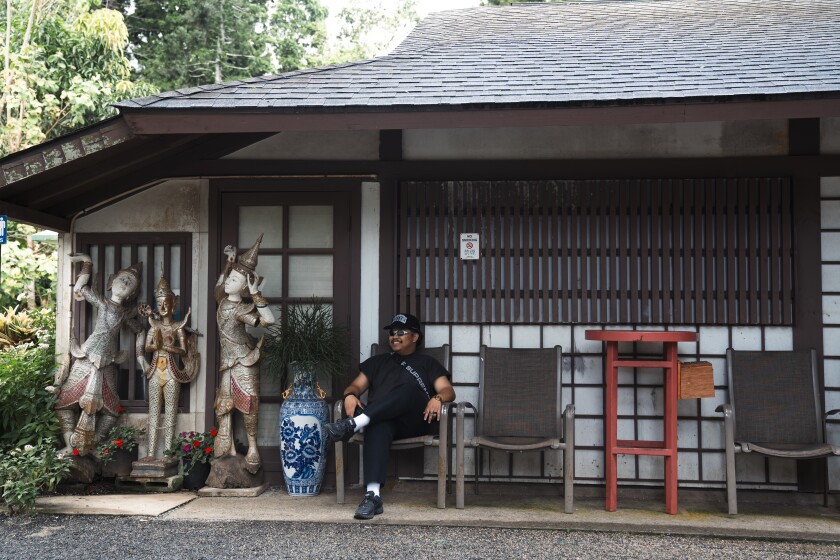A brief history of the Byodo-In Temple and the beauty it holds

Located at the foot of the Ko’olau Mountain, the Byodo-In Temple stands as a replica of the Byodo-In in Uji, Japan, says the information stand near its entrance. According to The Byodo-In Temple website, the temple was built in 1963 and was dedicated on June 7, 1968, to celebrate and honor the 100 anniversary of Japanese immigrant’s first arrival to Hawaii.
A temple for everyone
“The Byodo-In Temple means the Temple of Equality,” said Cassandra Marzol, a local from Ewa Beach and the advanced planning advisor of the Valley of Temples Memorial Park. The word “byodo” in Japanese means “equality,” said Mackenzie Goya, a local in Hawaii who worked as a sales associate at the gift store. “It’s a place for anyone,” he said. “Even though this is not a practicing temple, we are technically open to all religions and walks of life,” he continued.

The Phoenix Hall
Marzol said most people do not know the temple is shaped like a phoenix. According to Byodo-In Temple’s brochure, the phoenix symbolizes life in a heavenly paradise. The information stand of the Byodo-In Temple also says, “The structure is designed in the shape of the mythical bird of ancient legend. The central room is backed by a tail hallway and flanked by twin corridors.”

According to the temple’s information stand, the Phoenix Hall was built to shelter the Amida Buddha statue. “The magnificent Amida Buddha statue reflects light as it appears to hover over golden lotus leaves,” says the information stand. According to the Byodo-In Temple’s website, the Amida Buddha is the largest Buddha carving outside Japan. “Towering more than 9 feet, the immense figure is an original work of art carved by the famous Japanese sculptor Masuzo Inui,” says Byodo-In Temple Hawaii. In addition, the temple also has a columbarium, which contains ashes of all other faiths, says Byodo-In Temple.
Wildlife and nature
Goya said he has worked at the gift shop for six years. He said what he loved most about the temple was the wildlife. “I really like the cats here. I like the koi fish. We have a peacock, and we just got it recently,” he said. According to the Byodo-In Temple’s website, the temple is home to several animals, such as the Japanese koi fish, which can live for a hundred years. The website also says, “The temple grounds are also home to wild peacocks, black swans, turtles, frogs and other animals.”

According to the Byodo-In Temple’s brochure, the animals were not forced to live on the temple’s grounds. “A testament to the cemetery park’s natural beauty,” says their brochure. Goya also said he loves the scenery around the temple. “Compared to the original one in Kyoto, it’s really nice to have a background of the Ko’olau Mountain,” he added.
The sacred bell
“Cast in Osaka, Japan, with permission from the Japanese government, the 3-ton, 6-foot, 8-inch-high brass bell with a bottom diameter of 57 inches is housed in the ‘Kane-tsuki-do” or bell house,” says the Byodo-In Temple’s brochure. The sound of the bell is believed to cast away negativity in the mind. It “imparts deep calm and peace, creates happiness, blessings and a long life,” says the brochure.

